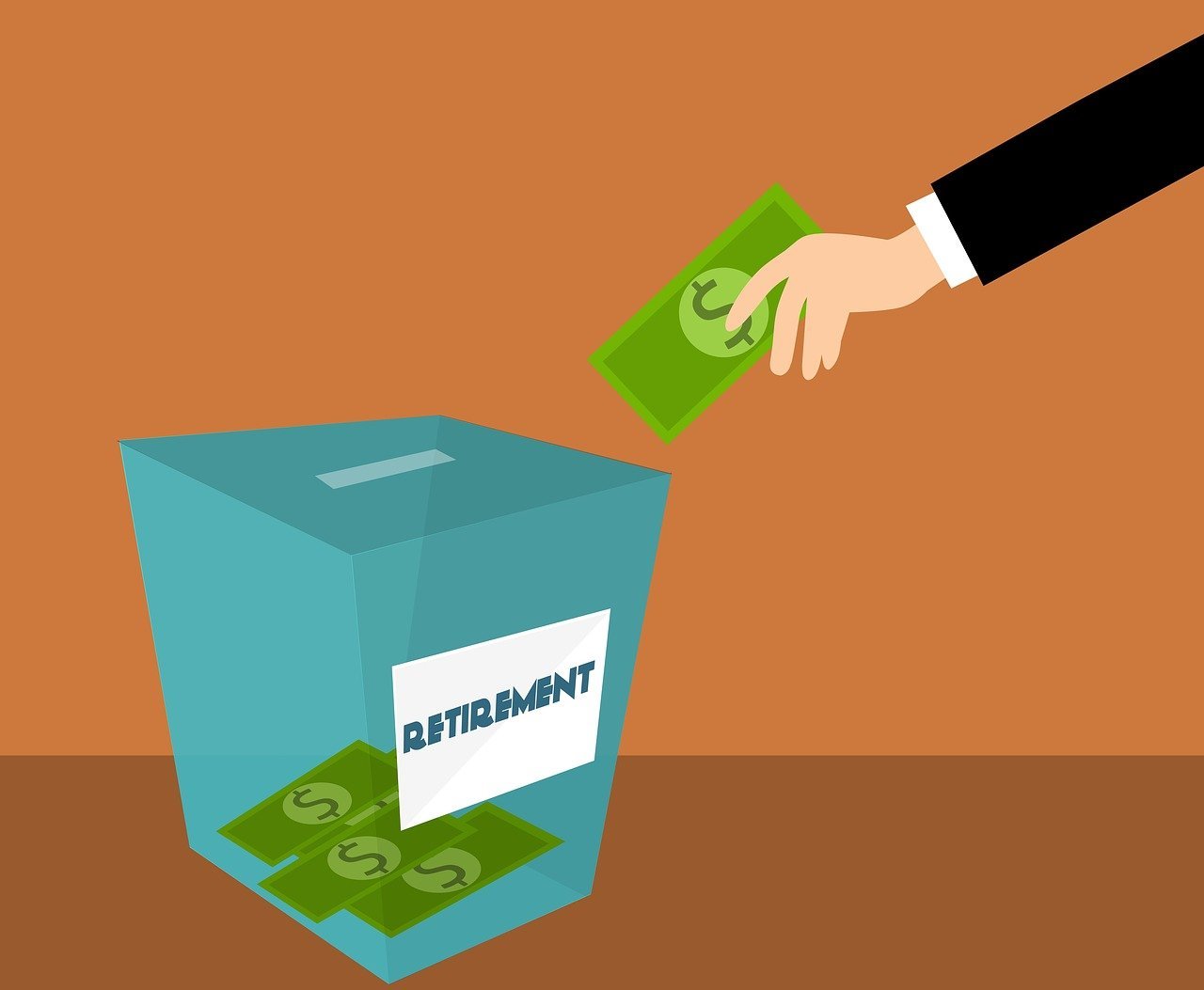Have you ever wondered how a Principal Group 401k could impact your financial future? Navigating the complexities of retirement planning can feel overwhelming, especially when you’re trying to balance day-to-day expenses with long-term savings. It’s crucial to have a clear understanding of what your options are when it comes to 401(k) plans, and how they can work for you.

This image is property of pixabay.com.
What is a Principal Group 401k?
A Principal Group 401k is a retirement savings plan offered by many employers as part of their employee benefits package. It’s named after the Principal Financial Group, a leading financial investment and insurance company that provides these plans. A 401(k) plan allows you to save a portion of your paycheck in a tax-advantaged account, growing your nest egg over time.
Your pre-tax contributions are invested in a variety of mutual funds, stocks, or bonds, and can significantly boost your retirement savings. The highlight here is the tax advantage; contributions are deducted from your taxable income, potentially reducing the amount of federal income tax you owe each year.
How Does a 401k Work?
Understanding the basic mechanics of a 401k plan is the first step toward leveraging its benefits. With a Principal Group 401k, contributions are made directly from your paycheck before taxes are taken out. This not only lowers your taxable income but also allows your savings to grow tax-deferred until you withdraw them at retirement.
You have a range of investment options to choose from, often including target-date funds, index funds, or individual stocks. This flexibility allows you to tailor your 401k investments to align with your retirement goals, risk tolerance, and expected retirement age.

This image is property of pixabay.com.
Matching Contributions: A Game Changer
One of the most appealing features of many 401k plans is the employer matching contribution. Essentially, your employer adds a certain amount to your 401(k) savings, matching your contributions up to a specified percentage. If your employer offers a match, it’s like free money, and it can significantly enhance your retirement savings. So, if your employer matches up to 3% of your salary, it would be wise to contribute at least that amount to maximize the benefit.
Here’s an example to illustrate:
| Salary | Employee Contribution (3%) | Employer Match (100% of 3%) | Total Annual Contribution |
|---|---|---|---|
| $50,000 | $1,500 | $1,500 | $3,000 |
As you can see, participating in employer matching programs can effectively double your contribution amount.
Vesting Schedules: What to Know
While employer matching sounds excellent, there’s a catch known as vesting. Vesting schedules dictate when you can keep your employer’s contributions if you leave the company. Immediate vesting is rare, and most companies offer either graded vesting or cliff vesting.
- Graded Vesting: This schedule allows you to keep a growing percentage of your employer’s contributions over a period of years.
- Cliff Vesting: With this approach, you receive 100% of the contributions after a specified period, often three to five years.
It’s essential to understand your company’s vesting schedule to make informed decisions about your employment longevity.

This image is property of pixabay.com.
Tax Implications of a 401k
The tax advantages of a 401k plan are among the most compelling reasons to contribute. Your contributions are tax-deferred, which means you don’t pay taxes on that money until you withdraw it, ideally after age 59 ½. This allows your investments to grow over the years without the tax burden compounding.
However, if you pull money out of your 401k before reaching age 59 ½, you might face a hefty 10% penalty—on top of the ordinary income taxes due on early withdrawals. It’s important to plan accordingly and consider your 401k as a long-term investment in your retirement.
Types of Principal Group 401k Plans
Principal Financial Group offers various types of 401k plans to suit different organizations and individual needs. Understanding the distinctions between these plans can help you choose the one that aligns best with your financial goals.
Traditional 401k
The Traditional 401k is typically what most people think of when they hear ‘401(k)’. Your contributions reduce your taxable income because they are pre-tax, and you get taxed on withdrawals upon retirement.
Roth 401k
A Roth 401k is another option that involves contributing after-tax dollars. The main advantage here is that your withdrawals in retirement are tax-free, provided you meet certain conditions. This plan might be beneficial if you expect to be in a higher tax bracket in retirement.
Safe Harbor 401k
A Safe Harbor 401k is similar to the traditional plan, but it includes employer contributions that are immediately 100% vested. This plan can be an excellent choice if you’re looking for more predictable retirement savings and planning.
SIMPLE 401k
The SIMPLE 401k, standing for Savings Incentive Match Plan for Employees, is geared toward small businesses. It combines the features of a traditional 401k with some twist, like lower contribution limits and mandatory employer contributions.

This image is property of pixabay.com.
Principal Group’s Investment Options
Having a robust range of investment options is vital for building a diversified and resilient retirement portfolio. With Principal Group 401k, you can access an array of investment avenues tailored to your financial goals and risk appetite.
Target-Date Funds
These are mutual funds designed to grow assets for a specified time horizon. As that date approaches, the fund adjusts to become more conservative with its investments. They’re ideal if you’re looking for a ‘set-it-and-forget-it’ investment strategy.
Index Funds
Index funds mimic the performance of a specific index, like the S&P 500. They are generally considered less volatile and offer lower fees, making them an effective option for long-term investors.
Individual Stocks and Bonds
For those willing to take on a bit more risk or seeking specific company stocks, Principal Group 401k plans also offer options for investing in individual stocks and bonds. This approach requires more attention and knowledge about market conditions but offers the potential for higher returns.
How to Manage Your 401k
Successfully managing your 401k is pivotal in ensuring a comfortable retirement. Here are some steps to help you proactively manage your plan:
Regular Contributions
Make sure you’re contributing enough to at least get the full employer match if available. Regularly increasing your contribution amount annually can significantly impact your savings over time.
Diversify Your Investments
Don’t place all your savings into one investment category. Diversification can help mitigate risks and optimize growth by spreading investments across various asset classes.
Monitor and Rebalance
Periodically review your portfolio to ensure it aligns with your risk tolerance and financial goals. Rebalancing your portfolio might be necessary to maintain your desired asset allocation.
Take Advantage of Financial Tools and Resources
Principal Group provides a range of online tools, calculators, and resources to help you make informed investment decisions. Use these resources to gain insights and strategize effectively.

This image is property of pixabay.com.
Planning for Retirement with Principal Group 401k
Planning for retirement should include setting clear financial goals, understanding your budget, and having realistic expectations of your retirement needs. Here are some considerations to help you:
Determine Your Retirement Needs
Consider what age you want to retire at and what kind of lifestyle you envision. Estimating your retirement expenses, including healthcare and daily living costs, will give you a benchmark to aim for.
Calculate Expected Income
Factor in all possible sources of income during retirement, including Social Security, pensions, and any other investments. This will guide you in determining how much you need to save in your 401k.
Seek Guidance from a Financial Advisor
Consulting with a financial advisor can provide tailored advice specific to your situation. They can help you navigate changes in tax laws and shifts in the economy, ensuring your retirement plan remains viable.
Common Mistakes to Avoid
To truly benefit from a 401k plan, it’s crucial to steer clear of common pitfalls that can derail your retirement goals:
Not Participating in Employer Match
Failing to contribute enough to benefit from an employer match is like leaving money on the table. Always aim to contribute at least up to the match limit.
Early Withdrawals
Avoid early withdrawals from your 401k unless absolutely necessary. Doing so can incur penalties and taxes that reduce your retirement savings significantly.
Ignoring Fees
Be aware of the fees associated with different investment options in your 401k. High fees can erode your returns over time, so opt for low-cost investment vehicles whenever possible.
Maximizing Your Principal Group 401k
Extracting the maximum benefit from your Principal Group 401k involves being proactive and informed. Here are some final tips to help you make the most of this retirement savings tool:
Start Early
The earlier you start contributing to your 401k, the more time your money has to grow due to compound interest. Even small contributions can grow significantly over several decades.
Keep Your Beneficiary Information Updated
Life changes such as marriage, divorce, or the birth of a child should prompt you to update your beneficiary details. Ensuring your 401k benefits go to the intended person is crucial for your estate planning.
Stay Informed
Keep abreast of changes in tax laws, employer policy changes, and new investment options within your 401k. Staying informed enables you to take advantage of any new opportunities or changes that affect your retirement savings plan.
By taking a thoughtful and informed approach to your Principal Group 401k, you can work towards securing a financially stable future. It’s never too late to optimize your retirement strategy and enjoy the peace of mind that comes with being well-prepared.


























































































